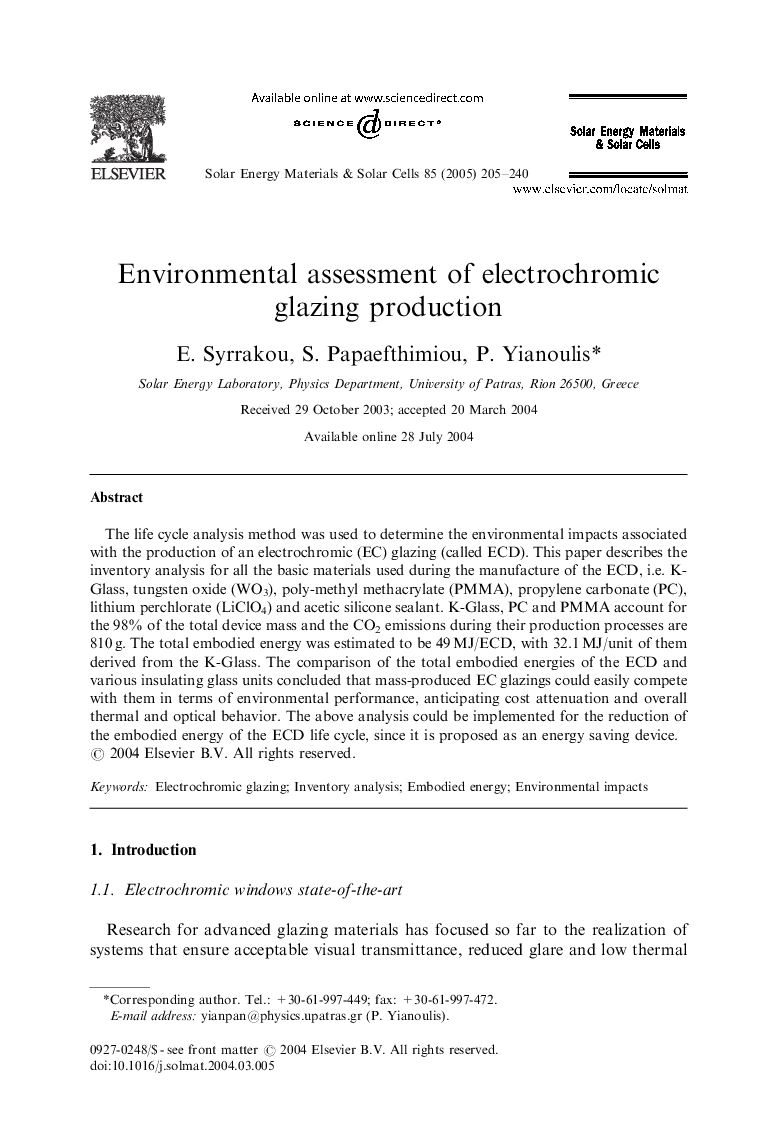| Article ID | Journal | Published Year | Pages | File Type |
|---|---|---|---|---|
| 10248895 | Solar Energy Materials and Solar Cells | 2005 | 36 Pages |
Abstract
The life cycle analysis method was used to determine the environmental impacts associated with the production of an electrochromic (EC) glazing (called ECD). This paper describes the inventory analysis for all the basic materials used during the manufacture of the ECD, i.e. K-Glass, tungsten oxide (WO3), poly-methyl methacrylate (PMMA), propylene carbonate (PC), lithium perchlorate (LiClO4) and acetic silicone sealant. K-Glass, PC and PMMA account for the 98% of the total device mass and the CO2 emissions during their production processes are 810Â g. The total embodied energy was estimated to be 49Â MJ/ECD, with 32.1Â MJ/unit of them derived from the K-Glass. The comparison of the total embodied energies of the ECD and various insulating glass units concluded that mass-produced EC glazings could easily compete with them in terms of environmental performance, anticipating cost attenuation and overall thermal and optical behavior. The above analysis could be implemented for the reduction of the embodied energy of the ECD life cycle, since it is proposed as an energy saving device.
Related Topics
Physical Sciences and Engineering
Chemical Engineering
Catalysis
Authors
E. Syrrakou, S. Papaefthimiou, P. Yianoulis,
